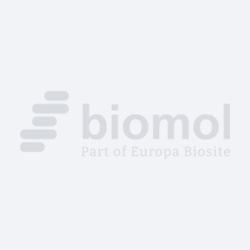Cookie preferences
This website uses cookies, which are necessary for the technical operation of the website and are always set. Other cookies, which increase the comfort when using this website, are used for direct advertising or to facilitate interaction with other websites and social networks, are only set with your consent.
Configuration
Technically required
These cookies are necessary for the basic functions of the shop.
"Allow all cookies" cookie
"Decline all cookies" cookie
CSRF token
Cookie preferences
Currency change
Customer-specific caching
FACT-Finder tracking
Individual prices
Selected shop
Session
Comfort functions
These cookies are used to make the shopping experience even more appealing, for example for the recognition of the visitor.
Note
Show the facebook fanpage in the right blod sidebar
Statistics & Tracking
Affiliate program
Conversion and usertracking via Google Tag Manager
Track device being used

| Item number | Size | Datasheet | Manual | SDS | Delivery time | Quantity | Price |
|---|---|---|---|---|---|---|---|
| M2767-20L.100 | 100 µg | - | - |
3 - 19 business days* |
961.00€
|
If you have any questions, please use our Contact Form.
You can also order by e-mail: info@biomol.com
Larger quantity required? Request bulk
You can also order by e-mail: info@biomol.com
Larger quantity required? Request bulk
TLRs belong to a family of proteins that specifically recognizes and senses microbial products.... more
Product information "Anti-MD-2, Soluble (TLR4/sMD-2 Complex, Toll-like Receptor 4, hToll, CD284, ARMD10/Lymphocyte Antige"
TLRs belong to a family of proteins that specifically recognizes and senses microbial products. They are highly conserved throughout evolution and act as innate immune recognition receptors against many pathogens. TLR4 is a functional receptor for gram-negative bacterial lipopolysaccharides (LPS). TLR4 associates with MD-2 which is absolutely required for LPS-induced activation of TLR4. MD-2 exists as a cell surface protein in association with TLR4. It also exists as secreted forms consisting of MD-2 monomer and multimers. Circulating sMD-2 is mainly present as a doublet of ~20 and 25kD, representing differentially glycosylated forms. Unlike TLR4, sMD-2 binds directly LPS without the need of soluble CD14 (sCD14). However, LPS-MD-2 interactions are increased when LPS is pretreated with CD14. Only monomeric sMD-2 is biologically active and able to associate with TLR4 and LPS. sMD-2 circulates in plasma of healthy individuals as a non-active, polymeric protein. In septic plasma, the total amount of sMD-2 was strongly elevated and contained both sMD-2 polymers and monomers. Soluble MD-2 is proposed to be an important mediator of organ inflammation during sepsis. During experimental human endotoxemia, the monomeric and total sMD-2 content in plasma increased with the kinetics of an acute phase protein. This parallels enhanced TLR4 costimulatory activity. In vitro studies revealed that sMD-2 release appears to be restricted to endothelial and dendritic cells. This monoclonal antibody reacts with both the monomeric and the polymeric form of sMD-2. In addition, it is able to inhibit LPS binding to MD-2. Applications: Suitable for use in Western Blot, ELISA and Immunofluorescence. Other applications not tested. Recommended Dilution: Western Blot: 1:50, ELISA: 1:50, Immunofluorescence: 1:50, Optimal dilutions to be determined by the researcher. Storage and Stability: May be stored at 4°C for short-term only. Aliquot to avoid repeated freezing and thawing. Store at -20°C. Aliquots are stable for at least 12 months. For maximum recovery of product, centrifuge the original vial after thawing and prior to removing the cap.
| Keywords: | Anti-LY96, Anti-ESOP1, Anti-Ly-96, Anti-ESOP-1, Anti-Protein MD-2, Anti-Lymphocyte antigen 96 |
| Supplier: | United States Biological |
| Supplier-Nr: | M2767-20L |
Properties
| Application: | ELISA, IF, WB |
| Antibody Type: | Monoclonal |
| Clone: | 13A56 |
| Conjugate: | No |
| Host: | Mouse |
| Species reactivity: | human |
| Immunogen: | Recombinant corresponding to human MD-2, His-tagged, expressed in Baculovirus. |
| Format: | Affinity Purified |
Database Information
| KEGG ID : | K05400 | Matching products |
| UniProt ID : | Q9Y6Y9 | Matching products |
| Gene ID : | GeneID 23643 | Matching products |
Handling & Safety
| Storage: | -20°C |
| Shipping: | +4°C (International: +4°C) |
Caution
Our products are for laboratory research use only: Not for administration to humans!
Our products are for laboratory research use only: Not for administration to humans!
Information about the product reference will follow.
more
You will get a certificate here
Viewed


![Anti-MD-2, clone [1A2E3] Anti-MD-2, clone [1A2E3]](https://www.biomol.com/media/image/05/4a/a8/200-301-CS4_200x200.jpg)
![Anti-MD-2, clone [9F1B1] Anti-MD-2, clone [9F1B1]](https://www.biomol.com/media/image/e5/8b/79/200-301-CS5_200x200.jpg)
